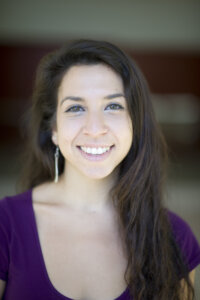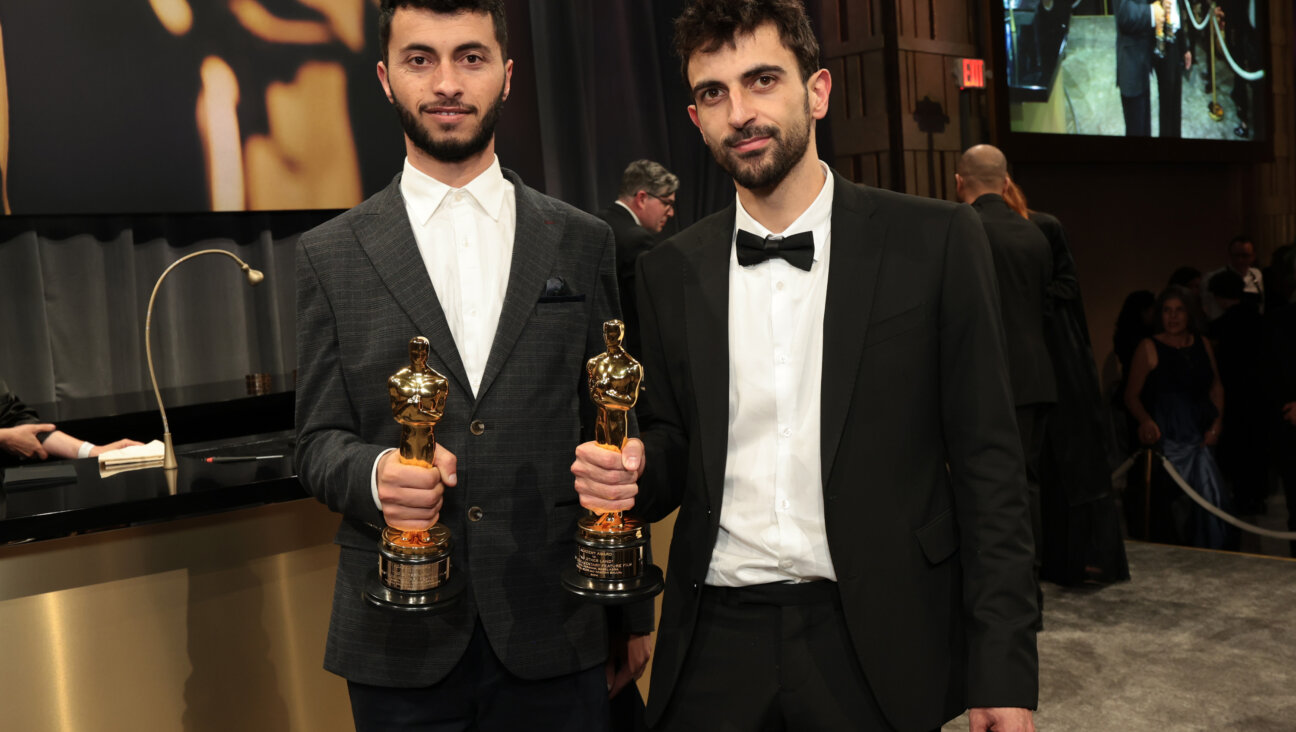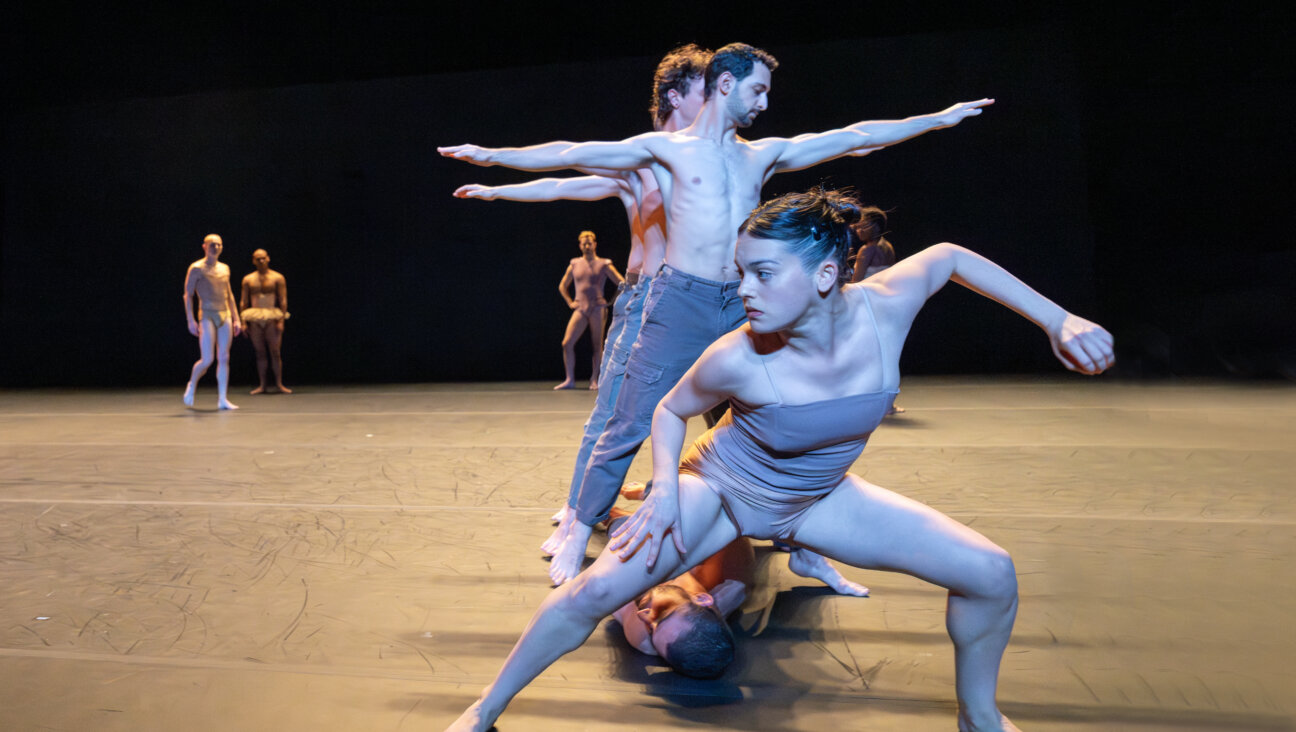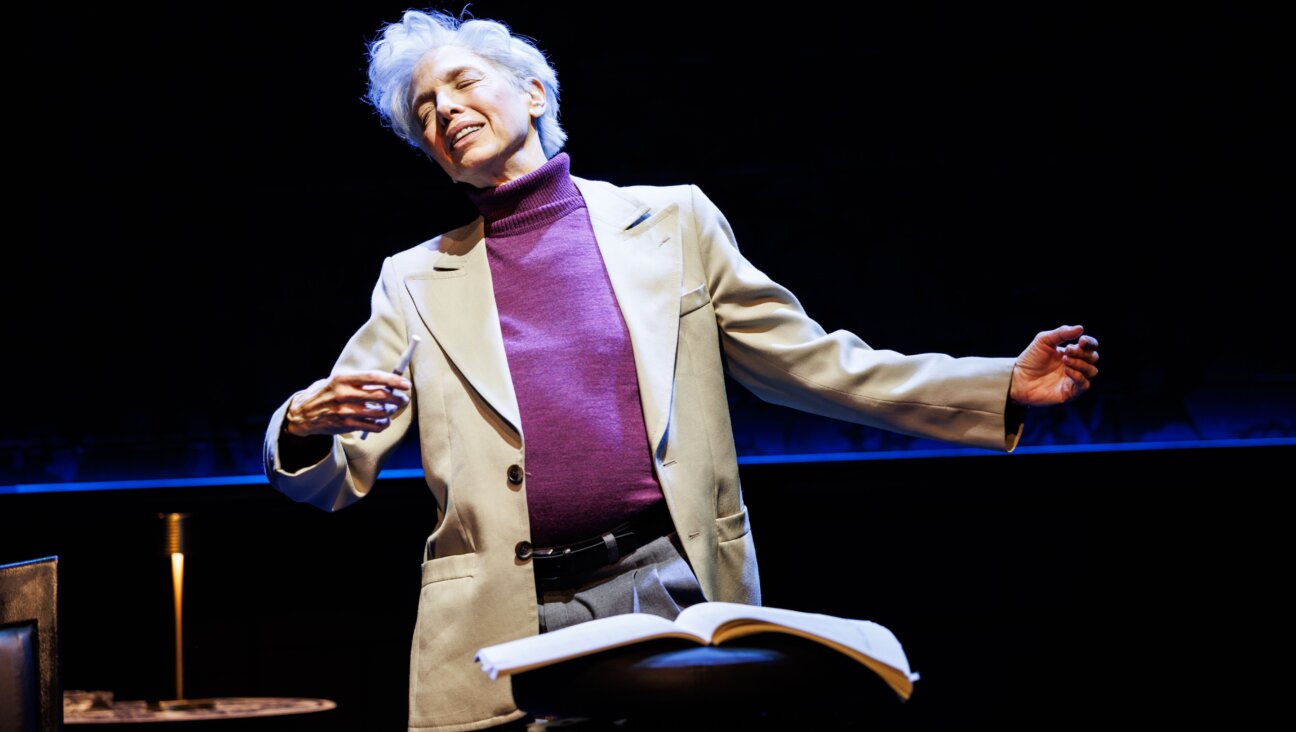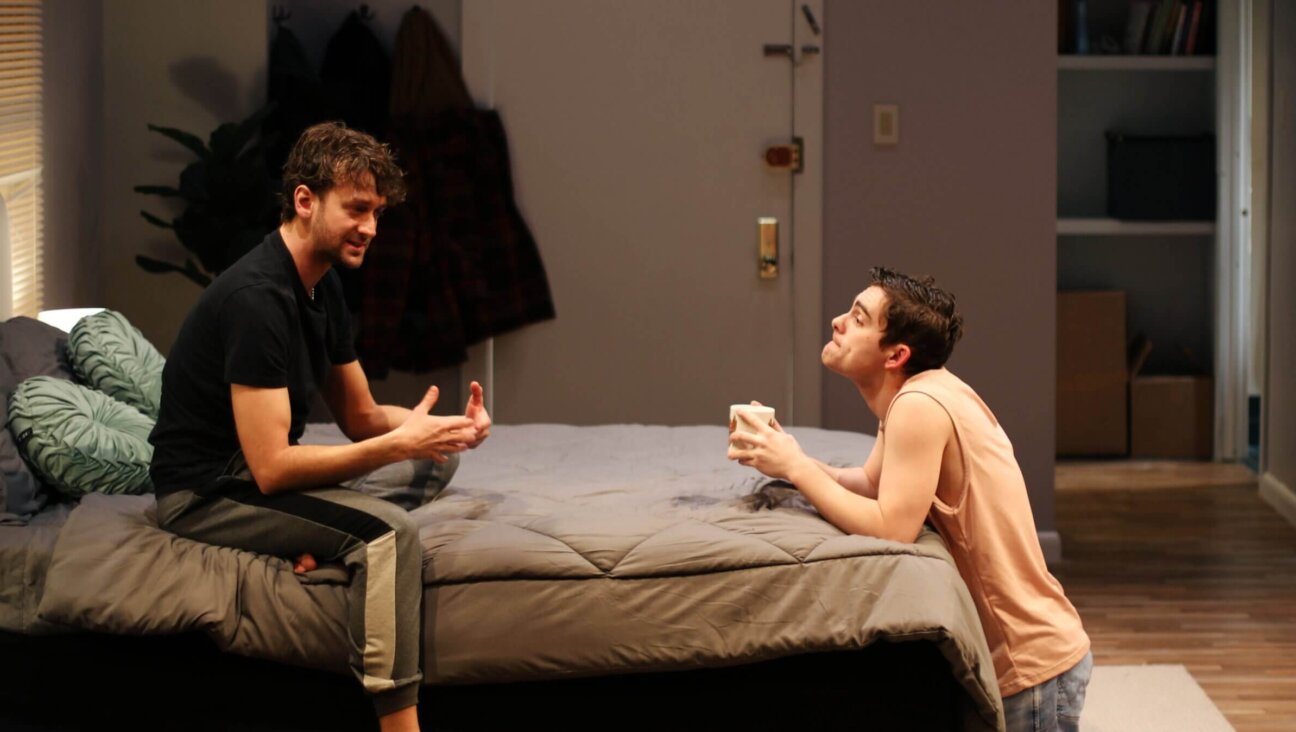After a house is destroyed in a fire, a Jewish artist finds a way to preserve its spirit

Graphic by Angelie Zaslavsky
Driving up the hill, there was a point where you could always catch the first glimpse of the house, the pitch of the roof and the top of this one tall tree. Whenever Windy Dougall came home to visit her family, that spot in the road was when she knew she was home.
“It was always very emotional for me,” she says. Approaching the house in Colfax, California, about an hour northeast of Sacramento, she’d think, “I’m going to sit on their back deck. And my mom and I are going to have our coffee together. And we’re going to talk about politics. And we’re gonna laugh and she’s gonna say some off-the-wall thing and my dad’s gonna tell us to calm down.”
But on this particular day in August 2021, nothing was quite the same. It was still summer but it looked to her almost like snow had fallen, blanketing the top of the hill and turning grimy. A layer of ash had settled over everything and trees like blackened toothpicks were poking out of the ground, enveloped by a heavy haze that still reeked of chemicals and smoke.

Burnt Memories: These frames once contained photos of Windy Dougall’s mother as a toddler with her adoptive parents on the steps of the San Francisco orphanage and her mother’s high school graduation. By Roseann Bath Photography
The one tree Dougall was looking for had burned up the center and was felled by firefighters so it wouldn’t injure anyone when it toppled over. Her parents’ house along with her sister’s about 200 yards down the path were both gone, devoured in an afternoon by the River Fire that swept through Northern California. Dougall had been living in her sister’s basement with her young son and sometimes her husband for two years, caring for her mom, who had died of lung cancer less than two weeks before the fire.
Pulling up into the barely recognizable driveway, all she could see was the metal fence her mom had put in to keep deer out of her rose garden and then the melted heap that used to be a ‘66 Mustang, her first car, in what would’ve been the garage. It looked, Dougall said, like a “post-apocalyptic wasteland.”
“For the first time ever in all the drives up the hill,” Dougall said, “there’s no pitch of the roof. And that tree’s not even there.” But that familiar sight is etched in her memory — and in a drawing she received from a stranger who offered to memorialize lost homes like this one.
Drawing Lost Homes

Preserved in a Sketch: Windy Dougall’s sister’s house was destroyed in a fire. It’s memorialized in this sketch by Meg Adler. By Roseann Bath Photography
Meg Adler has been drawing homes and other structures — what she sometimes calls “building portraits” — for years.
“The world is totally animated. Everything is alive. And I think where we live our lives, our homes, there’s a spirit, there’s aliveness there, there’s a portrait,” said Adler, a Jewish educator, artist, and poet who was born and raised in the Bay Area. “I like to look at buildings as kind of like characters in our lives. We have commitments to buildings. We see buildings and we feel things and we feel connected to them.”
Adler has drawn her parents’ house on the Oakland-Piedmont border where she grew up and where she and her wife stayed for over a year during the pandemic. She drew every angle of the rented apartment she and her wife shared in their beloved Alameda before coming to stay with her parents — and she’ll surely draw the new home they just moved into a few weeks ago back in Alameda.

Preserver of Lost Homes: Meg Adler is a Jewish educator, artist, and poet who was born and raised in the Bay Area. Courtesy of Meg Adler
Camp Tawonga is a recurring subject. Adler considers the Jewish camp she once attended and has returned to over and over again to be another kind of home — one where she now serves as assistant director of Jewish life and learning. She’s sketched the buildings of UCLA, where she studied creative writing as an undergrad, and of Yale, where she earned a master’s in religion.
She’s drawn landmarks of her Bay Area home, including the iconic Ferry Building in San Francisco, the Paramount Theatre in Oakland where she saw her first concert, and Temple Sinai in Oakland, where she went to Hebrew school and became bat mitzvah. Adler has long depicted the structures and sites she finds meaningful in her own life and began taking commissions through her illustration company Letters, Aligned — recreating, for example, a scene from a favorite trip for a daughter’s Christmas gift to her mom.
One day in the summer of 2020, an acquaintance from one of Adler’s Jewish communities got in touch. The woman had friends who’d lost their home in a wildfire, and she thought they might want to commission a drawing. “What are you charging these days?” the woman asked. Adler instinctively quoted her rate, but almost immediately reversed course. “I was like, ‘No, nevermind, just send me the photo,’” she said, thinking, “What am I doing? I don’t want to charge for this.”
After that first request, Adler realized she wanted to offer to create free drawings for others who were experiencing the grief of losing a home — or trying to comfort or reach out to loved ones who were. It was one thing she could offer as an artist.
“How could you not, right? It’s like, your specialty is drawing homes and you love it,” she said. “And then people are losing their homes and want a way to memorialize their home or a friend to tell their friend they’re thinking about them,” she added. “I feel the same way about COVID. Like, if I was a portrait artist, I might be out there drawing faces, but I draw houses.”
After a few conversations with friends, she posted on Instagram. “If someone you know loses their home in these California fires, please let me know. I will draw it (for free).” The caption read: “This won’t fix the tremendous loss,” but “it will hopefully allow folks to mourn and honor their memories.” Adler ended up drawing more than 70 lost homes last year and she renewed her call this year, offering to create 30 more: “More memories need preserving,” she wrote in a new Instagram post. “More people need comfort.”
Losing a Home

Compilation of Lost Homes: Meg Adler wanted to offer to create free drawings for those who were experiencing the grief of losing a home. By Meg Adler
On the day of the fire, Dougall was in the pool in her sister’s backyard in Colfax . Her niece and nephew were trying to help her three and a half year old son learn how to swim. The sky was clear and blue. Dougall smelled smoke, which wasn’t too unusual in those parts of California during fire season, but then her nephew noticed the film of ash floating in the pool and they saw a plume of smoke rising from the canyon beyond the house.
The family was well-acquainted with evacuations, both from those two houses in the forests of Northern California and down in San Diego County, where Dougall lived with her husband and son before her mother got diagnosed and where they’ve now returned. They headed to a friend’s house to wait, expecting the fire to be put out quickly and to be back before too long.
But within hours, the news came in the form of photos and videos from a firefighter friend. Her sister’s house was destroyed, already burnt down to the foundations, and they’d soon learn the other house was gone too. At first, Dougall felt frozen and blank, unable to process information. “I remember looking at my sister and she just looked like a wild animal that was taken out of its habitat or something, just like this lost, frightened look in her eye,” she said. “It’s like your brain doesn’t kick in to accept the thing that you already know. And so you’re sort of just in this daze.”

Charred Remains: In the aftermath of the River Fire, which destroyed Windy Dougall’s parents’ house along with her sister’s, Dougall found the remains of a gun. By Roseann Bath Photography
And then she began thinking about all the things they hadn’t packed up to take with them. “I don’t know why I didn’t grab a single family photo,” she said. “I didn’t grab any of the memorabilia.” They were so sure they’d return as they always had. And there was so little time — they’d never had to leave that quickly. They’d gotten all the people and pets out safely and one painting an uncle had made, but none of the other irreplaceable mementos, many of which they’d spent hours lovingly covering in bubble wrap and packing up in boxes in the days since her mom’s death.
“So many things are not recoverable,” said Daniel Mosley, a licensed psychologist with experience in disaster mental health, including as a volunteer with the Red Cross responding to wildfires. Some people are immediately “flooded with the sense of loss. And then they start remembering all of the different things that were in the home that were not recovered and will never be recovered,” he said. “It’s important to understand that the loss of one’s home shakes up a person’s very sense of foundation and security and stability,” he explained. “There’s such a bond and a connection to the space you call home. When that’s gone, it’s so unsettling and disruptive to your psychological sense of well-being.”
A home is more than the walls or the floors or the kitchen sink.“It is the memories, it’s the daily actions, everything that happens there, it’s all of the love that you filled it with. That’s what makes it a home, right? Not just a structure, not just a building,” Dougall said.
In the short term, it’s often the logistical, survival stuff — like housing and insurance — that take precedence, said Mary Good, a licensed marriage and family therapist based in Sonoma County who specializes in ecopsychology and ecotherapy and who offered post-disaster relief counseling for survivors of California wildfires. When it came to things, she heard most often about lost photographs along with pieces of art, heirlooms, childhood mementos, and other objects that had emotional and sentimental rather than monetary value.
The loss of the physical home also upends the daily rituals, habits, and rhythms people may not have even realized they relied on to define themselves. In the longer term, Good saw “folks reporting a loss of identity,” she said. “They hadn’t realized how much their identity was dependent on how the house held them.”
Requesting a Drawing

Lost Home: Meg Adler wanted to offer to create free drawings for people who were experiencing the grief of losing a home. This one is of Windy Dougall’s parents’ house. By Roseann Bath Photography
On that first drive back up to the property, Dougall carefully walked the perimeter and took in the scene. She later returned several times, usually with her dad, and spent days sifting through the rubble to see if there was anything left to pick out. Not much.
She found a teacup she’d once bought her mom for Mother’s Day, a few warped marbles from her mom’s old collection, a lone diamond that almost certainly came from her mom’s wedding ring, and some old picture frames that once hung in a little family photo gallery on her parents’ walls. She laid the frames out on a pile of debris, a grim collection of charred squares and rectangles, all empty. She knew exactly which images were supposed to be in them — her mother as a toddler with her adoptive parents on the steps of the San Francisco orphanage, her mother’s high school graduation — but the contours of the photos and the memories were already shrinking. “I can see it but the faces are already starting to go,” she said.

Diamond in the Rough: Upon surveying the ruined property, Windy Dougall found a lone diamond which almost certainly came from her mom’s wedding ring. By Roseann Bath Photography
Dougall’s mother had been particularly attached to mementos, since she was adopted with no knowledge or keepsakes from her birth family. “Objects were a way for her to create a family history and stories that she didn’t get to have,” Dougall said. “Everything had sentimental value.” You could pick up a rock or any other tchotchke in the house and her mother could tell you the tale behind it. “These objects then after she passed had this huge meaning to my sister and particularly me, I think because I’m a very sentimental person like my mom.”
As painful as it’s been for her, Dougall keeps thinking it must be even worse for her sister and her dad, who unlike her, have no other home to return to. She’s been helping them through the painstaking process of cataloguing every item that had been in the houses for their insurance companies and otherwise trying to do whatever she can to support them as they cope with the material and emotional losses. So when she heard from a friend whose brother-in-law saw a call from an artist offering to draw lost homes, Dougall knew she had to reach out.
“I knew that this was something that the kids and my sister and my dad could look at and it would keep that memory of that place — and then all of the memories of what happened in that place — more fresh, more alive,” she said. “What a generous thing to give strangers that you don’t know. People are so generous when this happens in every possible way they can be, but this is a very special way to help people move on.” They were so grateful for the money and gift cards and clothing they received. “They need all that. But they also need beauty and art and new family heirlooms and memories.”
So do far too many other Californians who’ve lost their homes in the wildfires. “The cabin didn’t make it through the fire, but I’ll be damned if it doesn’t live on forever in endless ways. This gorgeous drawing thanks to @lettersaligned is our first new family heirloom,” another drawing recipient wrote in an Instagram post. Often, people reached out to request drawings for family members or friends.
“Thanks to @lettersaligned for the beautiful offering of drawing homes lost to the fires,” wrote one person who requested an illustration she planned to gift to a couple “as a way to forever remember their first home.” Another thanked the person who’d requested a drawing on their behalf: “Thank you for knowing how much it means.”
Dougall had planned for the drawings to be a surprise her dad and sister could unwrap when the paper versions arrived in the mail. But when she got the digital images from Adler, she just couldn’t wait to share them. She sent them to her sister, who started crying as they FaceTimed and said she already knew hers would go on the wall of her new home when she’s able to build again. “It was just this really beautiful moment of her feeling like starting a life again,” Dougall said. “Meg’s giving that to people, the first little inkling of that.”
Paying It Forward

Preserving a Home: “f I was a portrait artist, I might be out there drawing faces, but I draw houses,” Meg Adler said. By Meg Adler
As she neared the last of her latest batch of drawings, Adler said she hopes there’ll be respite from fire so that there aren’t so many lost homes to draw in the future. But that seems unlikely. More than half of the 20 largest fires recorded in California took place in the last five years, according to a list from the California Department of Forestry and Fire Protection, burning through millions of acres and destroying thousands of structures. The wildfires are getting worse. Even the bnai mitzvah Adler works with through a program Tawonga runs have stopped scheduling outdoor ceremonies in August and September because of fire season.
As long as the fires continue — and as long as Adler’s able to make time and follow through — she’ll keep at it. The drawings may be separate from her full-time calling as a Jewish educator but they’re not separate from her Jewishness. “Everything I do is as a Jewish person. My art is as a Jewish person,” she said, and the “Lost Homes” drawings are no exception.
“The Jewish tradition does an excellent job of honoring grief, and making space for it and making space to tell stories and to pass on stories,” Adler said. “I’m not raising money to help people rebuild. I’m offering free memorials, basically. That’s intentional. I think it matters what the house used to look like. It’s a way to grieve. So to me that’s deeply connected to Jewish spirituality.”

Before the Fire: The Dougall-Isetta family poses for a photograph. By Roseann Bath Photography
Grief in our society more broadly can be such a lonely process, Good said. “The more time went on, the more left behind I think folks felt,” she said. “This goes for any kind of grief process,” and she saw it in the wildfire survivors she’s worked with. To have a tangible replica of the home you lost that you can hold onto, “that’s beautiful in and of itself,” she said. “But just to have been witnessed in your losing, witnessed in your grief, and then to have someone extend and say, ‘I see you. And not only do I see you but I recognize that what you’re going through is important and I want to honor that and so here is an offering back’? I think that that would assuage so much of the loneliness.”
Adler’s “Lost Homes” drawings are her way of reaching out when it feels like the news and others have moved on — to slow down and say, “I see that.” But she doesn’t feel protective of the concept. Just the opposite.
“It’s just an idea that I’m doing. Anyone can do it,” she said. “Like when Hurricane Ida came through, if some artist in New Orleans wants to draw houses destroyed by Ida, I think someone should be doing that.” And you don’t have to be an artist to pay it forward. If she could, she’d ask you: “What’s your version of what I’m doing? What can you offer?”
Stav Ziv is a journalist based in New York City whose work has also appeared in Newsweek, The Atlantic, Newsday, and the San Francisco Chronicle. She is currently deputy editor at The Muse.
